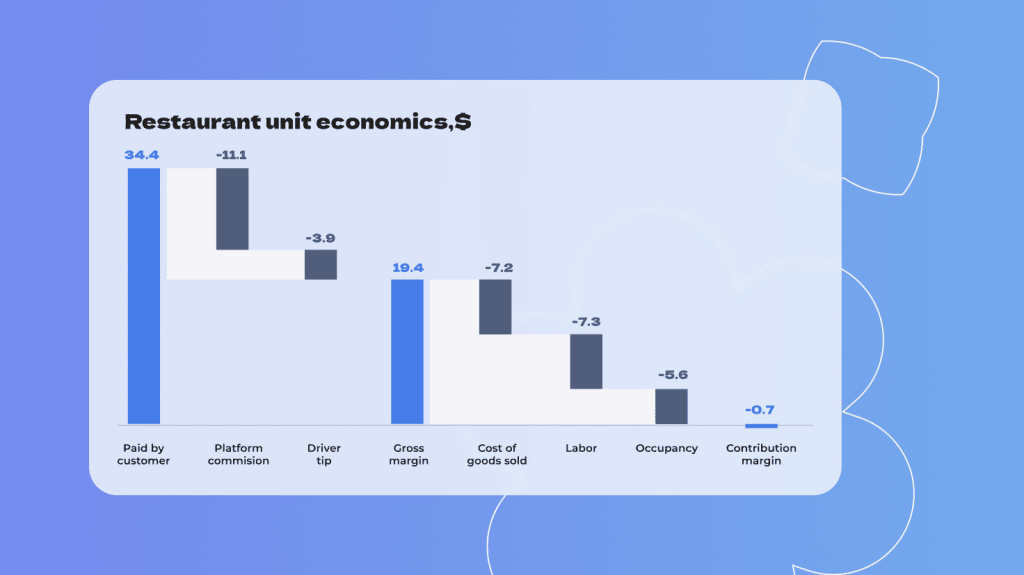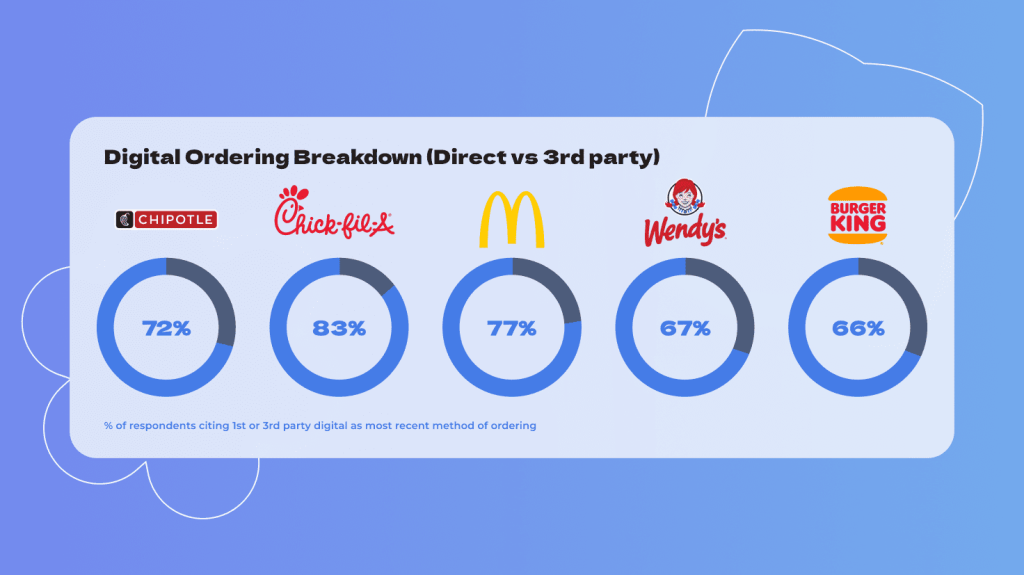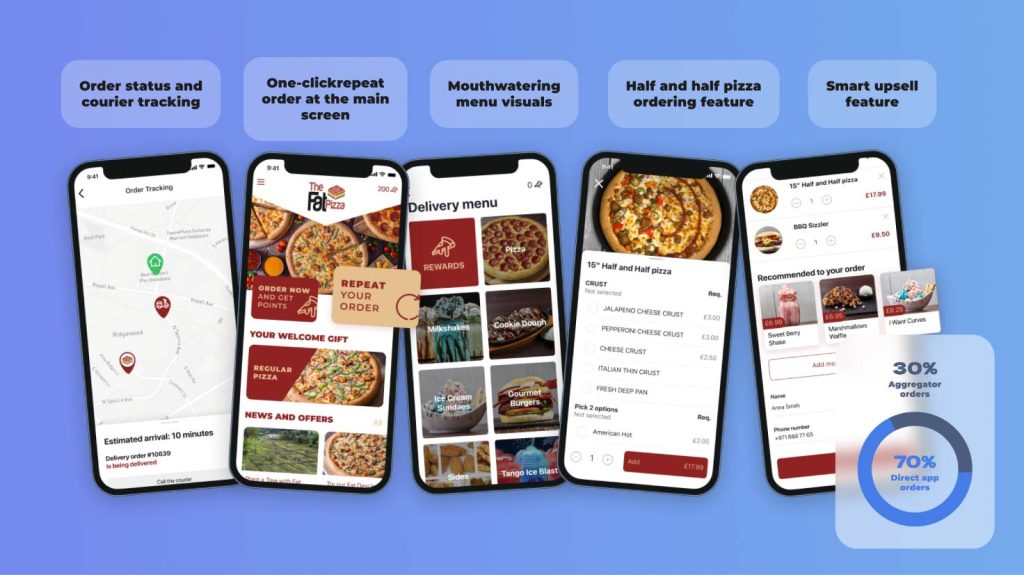
Unveiling the True Costs in the Age of Third-Party Aggregators
Global eating habits are undergoing a remarkable revolution. A little under a decade ago, most people preferred to dine in at restaurants rather than have high-quality meals delivered to their homes. However, the Covid pandemic and the limited availability of dining options have brought about significant changes.
During lockdowns and physical-distancing requirements, consumers had no other option but to adapt to new ways to enjoy meals. In response to these shifting consumer expectations, the restaurant industry also had no other choice but to find innovative ways to deliver its offerings and drastically change in a very short period of time. This led to a heavy reliance on third-party aggregators like Wolt, Just Eat, Uber Eats, and others, who became the primary means of reaching customers. As a result, the food delivery industry has experienced tremendous growth, now valued at over $150 billion, more than three times its value in 2017.
Unpacking the costs: the third-party aggregator dilemma
While aggregators may have initially helped some restaurants weather the Covid-19 pandemic, it is unclear whether it is a long-term solution. To understand why, let’s take a closer look at the traditional cost structure of restaurants.
Restaurants historically measured profits against three main costs: food, labor, and occupancy. Food costs usually range from 20 to 30 percent of expenses, labor costs average to 22-40 percent, and occupancy costs range from 22 to 29 percent. Additionally, equipment and marketing expenses should also be taken into account. Ideally, a well-managed restaurant operates within the 70 to 93 percent range, with a profit margin of 7 to 30 percent.

However, the reliance on third-party aggregators has introduced additional expenses that eat into restaurants’ bottom lines. These aggregators charge significant fees for their services, including commissions ranging from 15 to 35 percent, delivery costs, and sometimes even advertising expenses. The combined effect of these fees, along with the rising costs of food, labor, and in recent times and electricity, has made it increasingly challenging for restaurants to operate profitably.
We have some questions about the viability of that long term if you’re an independent, paying exorbitant fees for a third party to step into your value chain. So when does that all shake out? Your guess is as good as ours
Ritch Allison, the CEO of Domino’s Pizza
The high volume of orders from aggregators may create an impression that the kitchen is constantly occupied and delivery sales are thriving. However, by the end of the month, the profits generated from deliveries are essentially transferred to the delivery platform companies.
Untold risks of restaurant third-party aggregators
While we acknowledge the benefits of third-party aggregators, such as increasing visibility for restaurants, minimal upfront costs, and ease of setup, it is important to note that relying solely on them as the main digital selling channel may not be the most ideal approach due to various additional factors to consider.
1) Besides the financial cost, another critical yet often ignored problem is that aggregators don’t share customer data with restaurants. Essentially, they hold all the valuable information for themselves. As a result, restaurants have to promote blindly without knowing who their customers are. This hampers their marketing strategy and prevents them from building a closer connection with their audience. It’s like missing a key piece of the puzzle that could make their efforts more effective and engaging.
2) Dealing with aggregators can also expose restaurants to reputational risks from their limited control over the delivery service. When a delivery courier experiences significant delays or behaves rudely, the restaurant’s brand reputation bears the consequences rather than the aggregator’s. Customers directly associate such negative occasions with the restaurant itself, potentially resulting in a loss of trust and customer loyalty.
3) Moreover, aggregators often lure customers with discounts, devaluing brands and creating an expectation for constant price reductions. This practice can negatively impact the perception of a restaurant’s value and quality. Customers may become conditioned to seek out discounted alternatives, reducing their willingness to pay full price and undermining the restaurant’s profitability.
4) Also, despite their rapid growth, it is crucial to recognize that these aggregators are grappling with profitability challenges. As the Wall Street Journal reported, these companies are expected to remain unprofitable for several years. This poses additional risks for restaurants that heavily rely on third-party channels, as these platforms may either cease operations, leaving restaurants without a sales channel or increase commissions and demands that restaurants must comply with.
Indeed, it is undeniable that aggregators provide convenience for both parties. However, this “convenience” of food aggregators comes with unintended (or perhaps intended) consequences that negatively impact the industry itself and, ultimately, the customer.
Direct online ordering: where we are in 2023
As we enter the year 2023, the restaurant industry continues to evolve, embracing digital solutions to meet the changing needs of customers. While there is still a degree of reliance on aggregators for online ordering services, a notable shift can be observed within large restaurant chains with the emergence of branded mobile apps as a new channel for direct online ordering.

These statistics clearly indicate that the future lies in leveraging direct channels, such as mobile apps, while maintaining a balance with third-party aggregators. It’s not a simple choice of one versus the other, but rather a delicate proportion between the two. By adopting this approach, restaurants can not only increase brand awareness but also gain greater control over their operations and valuable customer data. Over time, this strategy enables them to reduce reliance on third-party platforms and establish a stronger, more sustainable business model.
Case study on unleashing a powerful direct channel
Of course, the level of reliance on aggregators still is present and varies through countries, but even in cases where third-party delivery platforms have a significant influence, it is feasible to decrease dependence on these platforms.
For instance, a UK-based ghost kitchen chain, The Fat Pizza sought the assistance of LoyaltyPlant to develop a branded mobile app as a direct channel to reduce their heavy dependence on third-party delivery providers. This strategic decision aimed to tackle various challenges that many ghost kitchens face, including the limited walk-in traffic for online conversions and a low volume of occasional orders, which result in high customer acquisition costs.

After the launch, The Fat Pizza strategically leveraged third-party aggregators as a means to promote its app and enhance brand visibility. This strategic move resulted in a significant expansion of their loyal customer base, surpassing 200,000 app users.
In summary, aggregators have their own benefits but relying solely on them as the primary digital selling channel comes with certain drawbacks. These include high commissions, limited access to customer data, lack of delivery control, discount seeking, and dependence on the unpredictable nature of aggregators, which can pose potential challenges to profitability.
To mitigate these risks, it is crucial to diversify sales and establish direct channels of your own. This involves implementing an all-in-one solution, like LoyaltyPlant, that includes delivery integration, a loyalty program within the ordering system, robust marketing tools to create personalized campaigns, and many other features that you also may find on our product page. By following this approach, restaurants can safeguard against the potential pitfalls of depending solely on a single platform and ensure greater control over their marketing strategies, audience engagement, and overall profitability.

)
)
)
)
)
)
)
)
)
)